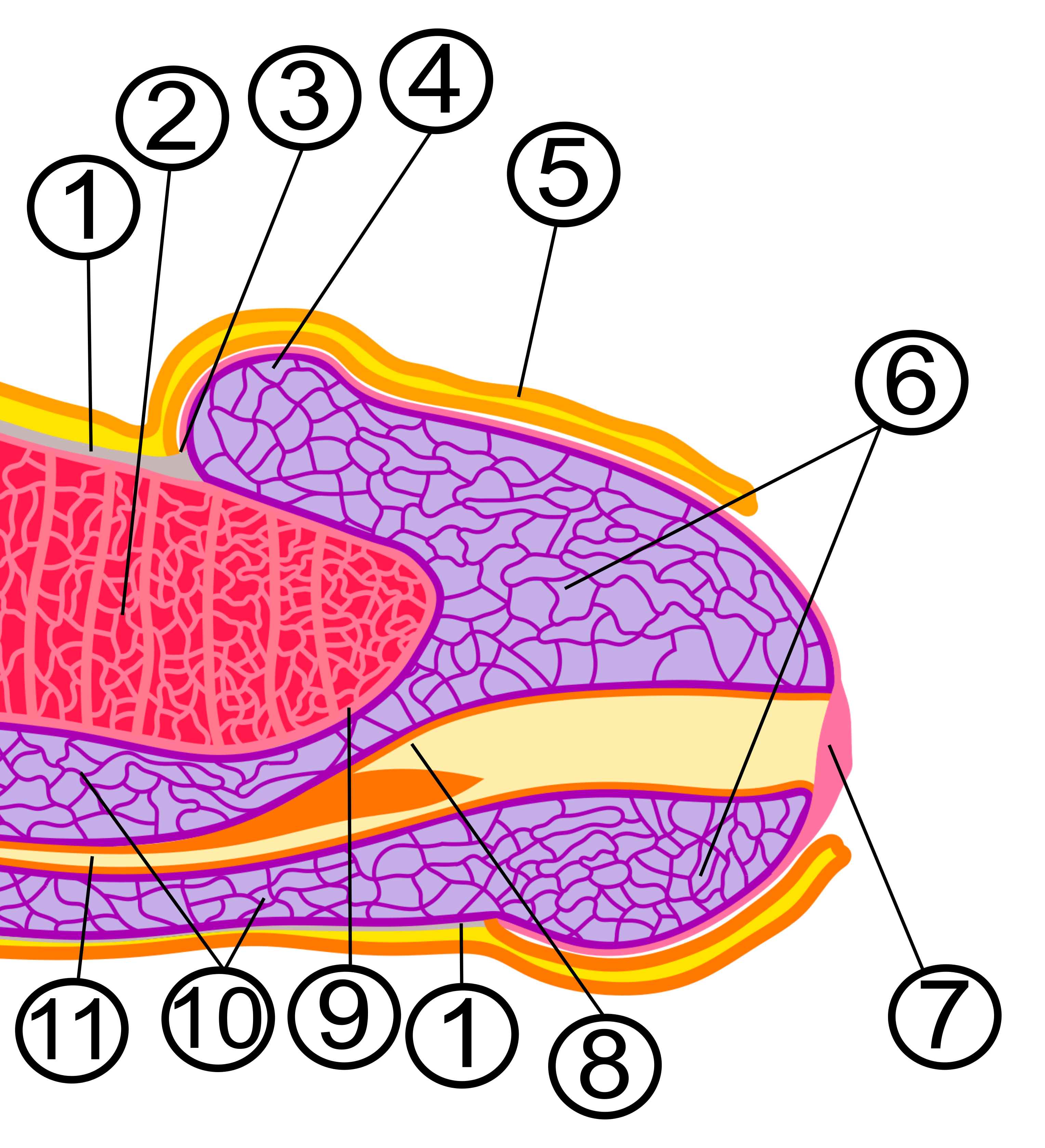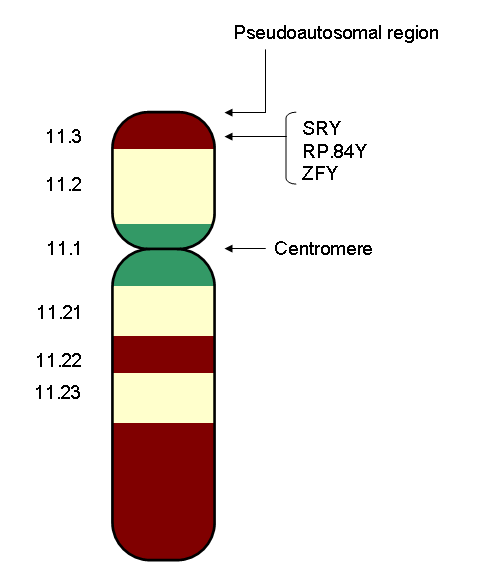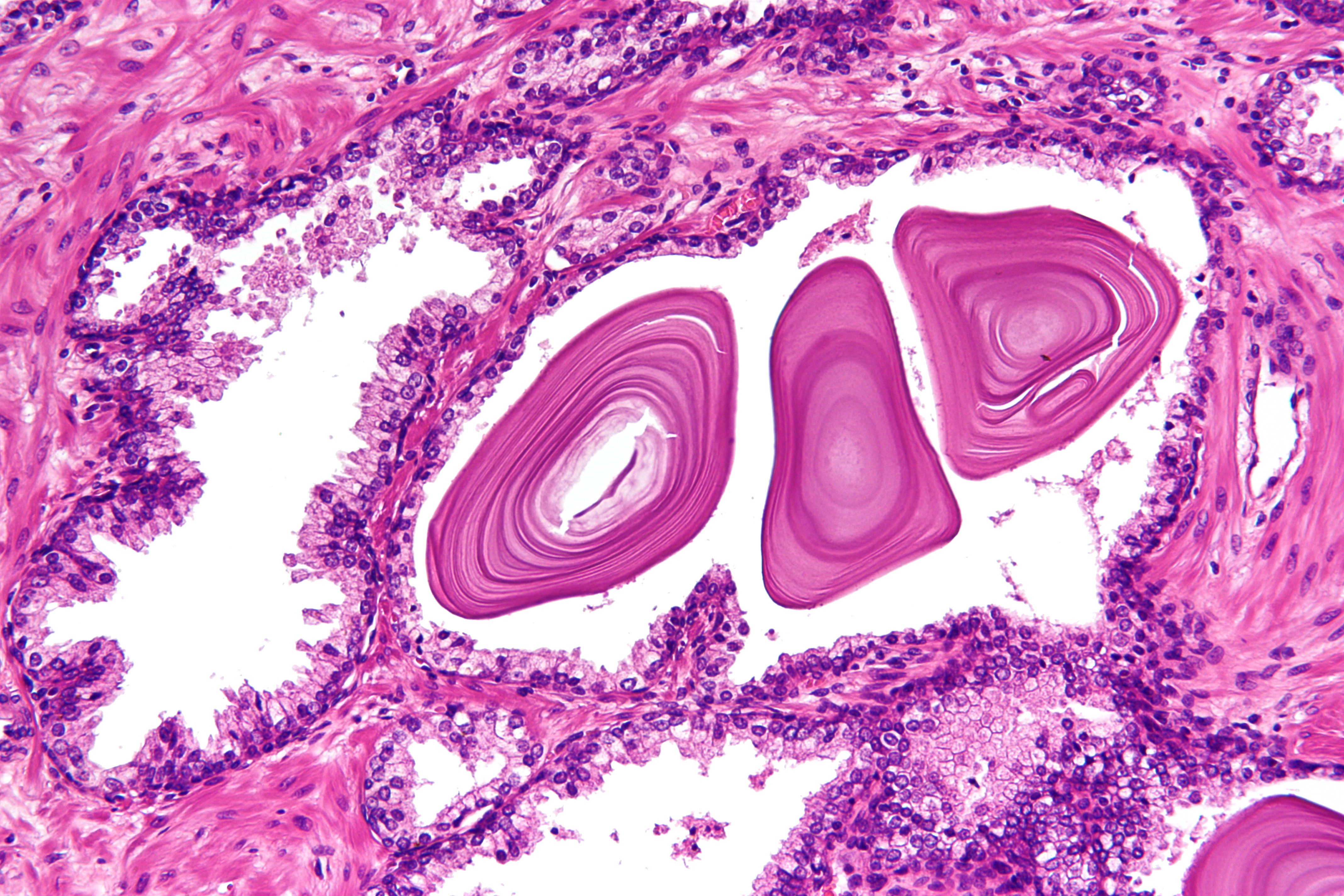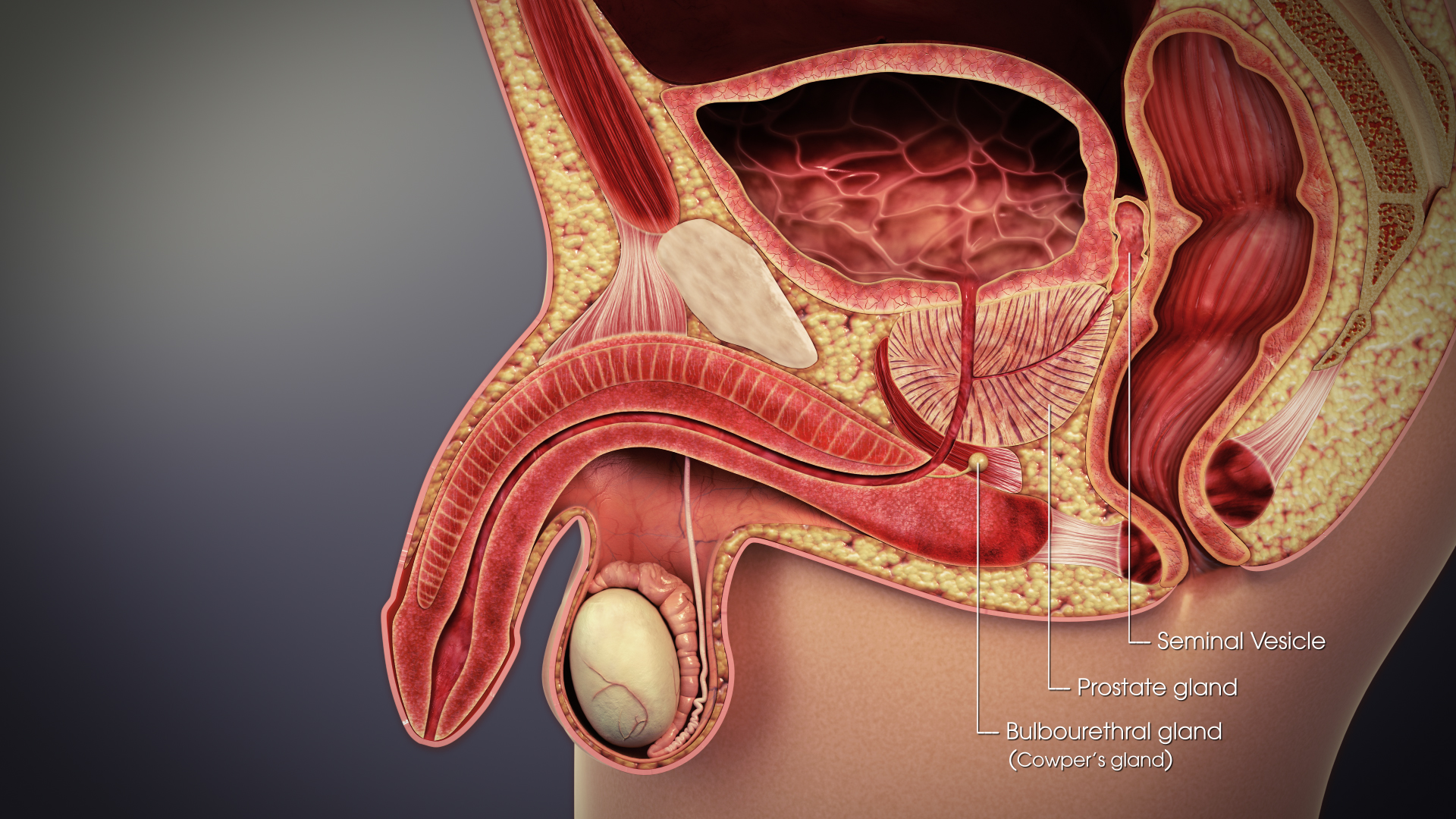|
Male Reproductive System
The male reproductive system consists of a number of sex organs that play a role in the process of human reproduction. These organs are located on the outside of the body and within the pelvis. The main male sex organs are the penis and the testicles which produce semen and sperm, which, as part of sexual intercourse, fertilize an ovum in the female's body; the fertilized ovum (zygote) develops into a fetus, which is later born as an infant. The corresponding system in females is the female reproductive system. External genital organs Penis The penis is the male intromittent organ. It has a long shaft and an enlarged bulbous-shaped tip called the glans penis, which supports and is protected by the foreskin. When the male becomes sexually aroused, the penis becomes erect and ready for sexual activity. Erection occurs because sinuses within the erectile tissue of the penis become filled with blood. The arteries of the penis are dilated while the veins are compressed so ... [...More Info...] [...Related Items...] OR: [Wikipedia] [Google] [Baidu] |
Sex Organ
A sex organ (or reproductive organ) is any part of an animal or plant that is involved in sexual reproduction. The reproductive organs together constitute the reproductive system. In animals, the testis in the male, and the ovary in the female, are called the ''primary sex organs''. All others are called ''secondary sex organs'', divided between the external sex organs—the genitals or external genitalia, visible at birth in both sexes—and the internal sex organs. Mosses, ferns, and some similar plants have gametangia for reproductive organs, which are part of the gametophyte. The flowers of flowering plants produce pollen and egg cells, but the sex organs themselves are inside the gametophytes within the pollen and the ovule. Coniferous plants likewise produce their sexually reproductive structures within the gametophytes contained within the cones and pollen. The cones and pollen are not themselves sexual organs. Terminology The ''primary sex organs'' are the gonads, a p ... [...More Info...] [...Related Items...] OR: [Wikipedia] [Google] [Baidu] |
Glans Penis
In male human anatomy, the glans penis, commonly referred to as the glans, is the bulbous structure at the distal end of the human penis that is the human male's most sensitive erogenous zone and their primary anatomical source of sexual pleasure. It is anatomically homologous to the clitoral glans. The glans penis is part of the male reproductive organs in humans and other mammals where it may appear smooth, spiny, elongated or divided. It is externally lined with mucosal tissue, which creates a smooth texture and glossy appearance. In humans, the glans is a continuation of the corpus spongiosum of the penis. At the summit appears the urinary meatus and at the base forms the corona glandis. An elastic band of tissue, known as the frenulum, runs on its ventral surface. In men who are not circumcised, it is completely or partially covered by the foreskin. In adults, the foreskin can generally be retracted over and past the glans manually or sometimes automatically during an ... [...More Info...] [...Related Items...] OR: [Wikipedia] [Google] [Baidu] |
Sexual Differentiation
Sexual differentiation is the process of development of the sex differences between males and females from an undifferentiated zygote. Sex determination is often distinct from sex differentiation; sex determination is the designation for the development stage towards either male or female, while sex differentiation is the pathway towards the development of the phenotype. In many species, testicular or ovarian differentiation begins with appearance of Sertoli cells in males and granulosa cells in females. As male and female individuals develop from embryos into mature adults, sex differences at many levels develop, such as genes, chromosomes, gonads, hormones, anatomy, and psyche. Beginning with determination of sex by genetic and/or environmental factors, humans and other organisms proceed down different pathways of differentiation as they grow and develop. These processes are not fixed, and can change over one organism's lifetime or over many generations evolutionarily. Sex ... [...More Info...] [...Related Items...] OR: [Wikipedia] [Google] [Baidu] |
Bulbourethral Gland
The bulbourethral glands or Cowper's glands (named for English anatomist William Cowper) are two small exocrine glands in the reproductive system of many male mammals (of all domesticated animals, they are absent only in dogs). They are homologous to Bartholin's glands in females. The bulbouretheral glands are responsible for producing a pre-ejaculate fluid called Cowper's fluid (known colloquially as ''pre-ejaculate'' or ''pre-cum''), which is secreted during sexual arousal, neutralizing the acidity of the urethra in preparation for the passage of sperm cells. Location Bulbourethral glands are located posterior and lateral to the membranous portion of the urethra at the base of the penis, between the two layers of the fascia of the urogenital diaphragm, in the deep perineal pouch. They are enclosed by transverse fibers of the sphincter urethrae membranaceae muscle. Structure The bulbourethral glands are compound tubulo-alveolar glands, each approximately the size of a pe ... [...More Info...] [...Related Items...] OR: [Wikipedia] [Google] [Baidu] |
Prostate Gland
The prostate is both an accessory gland of the male reproductive system and a muscle-driven mechanical switch between urination and ejaculation. It is found only in some mammals. It differs between species anatomically, chemically, and physiologically. Anatomically, the prostate is found below the bladder, with the urethra passing through it. It is described in gross anatomy as consisting of lobes and in microanatomy by zone. It is surrounded by an elastic, fibromuscular capsule and contains glandular tissue as well as connective tissue. The prostate glands produce and contain fluid that forms part of semen, the substance emitted during ejaculation as part of the male sexual response. This prostatic fluid is slightly alkaline, milky or white in appearance. The alkalinity of semen helps neutralize the acidity of the vaginal tract, prolonging the lifespan of sperm. The prostatic fluid is expelled in the first part of ejaculate, together with most of the sperm, because of the a ... [...More Info...] [...Related Items...] OR: [Wikipedia] [Google] [Baidu] |
Seminal Vesicles
The seminal vesicles (also called vesicular glands, or seminal glands) are a pair of two convoluted tubular glands that lie behind the urinary bladder of some male mammals. They secrete fluid that partly composes the semen. The vesicles are 5–10 cm in size, 3–5 cm in diameter, and are located between the bladder and the rectum. They have multiple outpouchings which contain secretory glands, which join together with the vas deferens at the ejaculatory duct. They receive blood from the vesiculodeferential artery, and drain into the vesiculodeferential veins. The glands are lined with column-shaped and cuboidal cells. The vesicles are present in many groups of mammals, but not marsupials, monotremes or carnivores. Inflammation of the seminal vesicles is called seminal vesiculitis, most often is due to bacterial infection as a result of a sexually transmitted disease or following a surgical procedure. Seminal vesiculitis can cause pain in the lower abdomen, scrotum, ... [...More Info...] [...Related Items...] OR: [Wikipedia] [Google] [Baidu] |
Accessory Glands
Male accessory glands (MAG) in humans are the seminal vesicles, prostate gland, and the bulbourethral glands (also called Cowper's glands). In insects, male accessory glands produce products that mix with the sperm to protect and preserve them, including seminal fluid proteins. Some insecticides can induce an increase in the protein content of the male accessory glands of certain types of insects. This has the unintended effect of increasing the number of offspring they produce. These glands secrete fluid for nourishment of sperm. Accessory glands The male accessory glands are the ampullary gland, seminal vesicles, prostate, bulbourethral gland, and urethral glands. The products of these glands serve to nourish and activate the spermatozoa, to clear the urethral tract prior to ejaculation, serve as the vehicle of transport of the spermatozoa in the female tract, and to plug the female tract after placement of spermatozoa to help ensure fertilization. Although the glands are ... [...More Info...] [...Related Items...] OR: [Wikipedia] [Google] [Baidu] |
Sobo 1909 571
{{disambiguation, geo, surname ...
Sobo may refer to: Places * Sobo, La Brea, Trinidad and Tobago * Mount Sobo, Japan * SoBo or South Mumbai Other * Sobo (deity) * Sobo language (other) * Alexandra Sobo (born 1987), Romanian volleyball player * Sobo, an app for recording and distributing sound snippets, developed by Alan Braverman Alan Michael Braverman is an American businessman. He is co-founder and initial CTO of Xoom Corporation/Eventbrite with Kevin Hartz and Geni.com/Yammer with David O. Sacks. In 2014 Braverman worked on Sobo, "an audio version of Twitter" Bra ... [...More Info...] [...Related Items...] OR: [Wikipedia] [Google] [Baidu] |
Dartos Muscle
The dartos fascia or simply dartos is a layer of connective tissue found in the penile shaft, foreskin, scrotum and labia. The penile portion is referred to as the superficial fascia of penis or the subcutaneous tissue of penis, while the scrotal part is the dartos proper. In addition to being continuous with itself between the scrotum and the penis, it is also continuous with Colles fascia of the perineum and Scarpa's fascia of the abdomen. The dartos lies just below the skin, which places it just superficial to the external spermatic fascia in the scrotum and to Buck's fascia in the penile shaft. In the scrotum, it consists mostly of smooth muscle. The tone of this smooth muscle is responsible for the wrinkled (rugose) appearance of the scrotum. In females, the same muscle fibers are less well developed and termed ''dartos muliebris,'' lying beneath the skin of the labia majora. The dartos fascia receives innervation from postganglionic sympathetic nerve fibers arriving via th ... [...More Info...] [...Related Items...] OR: [Wikipedia] [Google] [Baidu] |
Cremaster Muscle
The cremaster muscle is a paired structure made of thin layers of striated and smooth muscle that covers the testis and the spermatic cord in human males. It consists of the lateral and medial parts. Cremaster is an involuntary muscle, responsible for the cremasteric reflex; a protective and physiologic superficial reflex of the testicles. The reflex raises and lowers the testicles in order to keep them protected. Along with the dartos muscle of the scrotum, it regulates testicular temperature, thus aiding the process of spermatogenesis. Structure In human males, the cremaster muscle is a thin layer of striated muscle found in the inguinal canal and scrotum between the external and internal layers of spermatic fascia, surrounding the testis and spermatic cord. The cremaster muscle is a paired structure, there being one on each side of the body. Anatomically, the lateral cremaster muscle originates from the internal oblique muscle, just superior to the inguinal canal, and the mid ... [...More Info...] [...Related Items...] OR: [Wikipedia] [Google] [Baidu] |
Pudendal Artery
The pudendal arteries are a group of arteries which supply many of the muscles and organs of the pelvic cavity. The arteries include the internal pudendal artery, the superficial external pudendal artery, and the deep external pudendal artery. The internal pudendal artery branches off the internal iliac artery, the main artery of the pelvis, and supplies blood to the sex organs. The internal pudendal artery gives rise to the perineal artery and the inferior rectal artery. The superficial external pudendal artery arises from the medial side of the femoral artery. It supplies the male scrotum and the female labia majora The labia majora (singular: ''labium majus'') are two prominent longitudinal cutaneous folds that extend downward and backward from the mons pubis to the perineum. Together with the labia minora they form the labia of the vulva. The labia majo .... References Arteries of the lower limb Arteries of the abdomen {{Portal bar, Anatomy ... [...More Info...] [...Related Items...] OR: [Wikipedia] [Google] [Baidu] |
Cartilage
Cartilage is a resilient and smooth type of connective tissue. In tetrapods, it covers and protects the ends of long bones at the joints as articular cartilage, and is a structural component of many body parts including the rib cage, the neck and the bronchial tubes, and the intervertebral discs. In other taxa, such as chondrichthyans, but also in cyclostomes, it may constitute a much greater proportion of the skeleton. It is not as hard and rigid as bone, but it is much stiffer and much less flexible than muscle. The matrix of cartilage is made up of glycosaminoglycans, proteoglycans, collagen fibers and, sometimes, elastin. Because of its rigidity, cartilage often serves the purpose of holding tubes open in the body. Examples include the rings of the trachea, such as the cricoid cartilage and carina. Cartilage is composed of specialized cells called chondrocytes that produce a large amount of collagenous extracellular matrix, abundant ground substance that is rich in pro ... [...More Info...] [...Related Items...] OR: [Wikipedia] [Google] [Baidu] |






